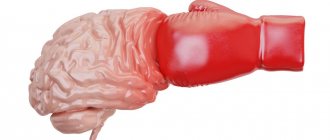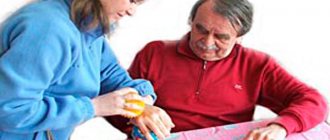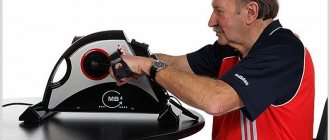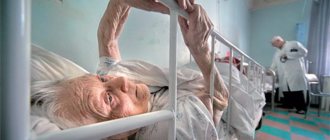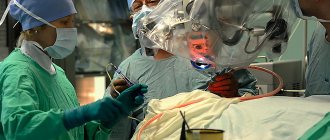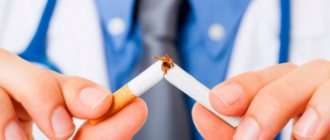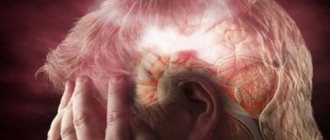Some people, faced with a stroke, may wonder: how many strokes can a person suffer and how dangerous is it for him? It may seem that these diseases only affect older people. However, in reality everything is much more serious. Therefore, in order to avoid a stroke, you need to know what it is, the reasons for its occurrence and what to do during an attack.
A stroke is an acute disorder of cerebral circulation. It can occur in both young (from 22 years old) and older people. Characterized by sudden or gradual onset of noticeable symptoms. Its occurrence may be the result of factors such as blockage of blood vessels in the brain and bleeding into its membranes or the brain itself.
Causes and symptoms of stroke
According to statistics, an attack is most often observed in men over 60 years of age, and in women over 75. The main causes of an attack include:
- vascular circulatory disorders;
- blockage of blood vessels with embolus (clumps of fat-like substances);
- degenerative modification of vessel walls (narrowing in areas);
- thrombosis (formation of blood clots);
- cerebral hemorrhage.
Thrombosis most often begins after surgery. It is usually observed in people who are overweight, those who smoke and drink alcohol, and those who take drugs. An attack due to a hemorrhage in the head can occur in any person, regardless of age. In general, it appears in people suffering from sudden changes in blood pressure, leading a sedentary and sedentary lifestyle, as well as in women who use oral contraceptives.
Symptoms of a stroke can be determined by a doctor or emergency medical technician. The main signs of the disease can be divided into two types: general cerebral and focal.
General cerebral symptoms include most abnormalities associated with traumatic brain injury. These may include incoordination, dizziness, temporary deafness or severe agitation. Focal symptoms include all the initial signs: unbalanced speech, poor coordination of movements, temporary loss of vision, muscle tension and distortion of the left side of the face due to the inability to contract muscles.
At the first general symptoms, a sick person should be immediately taken to the intensive care unit or call an ambulance. To determine whether a stroke is present, a number of tests are performed, such as magnetic resonance imaging (MRI), blood tests, and an electroencephalogram (EEG). Only after this the doctor can accurately diagnose the patient.
Types and classifications of strokes
Stroke can be divided into several main types encountered in medical practice. Each of them has different properties. The disease is divided into:
- ischemic;
- extensive;
- spinal;
- hemorrhagic;
- lacunar;
- spicy;
- repeated;
- microstroke.
The most common form is ischemic stroke. According to statistics, 80% of attacks are ischemic. Its second name is cerebral infarction. This happens due to a disruption in the blood supply to brain cells. The causes are considered to be all sorts of blockages and narrowing of blood vessels. A modification of a cerebral stroke is a lacunar stroke. It occurs due to limited damage to the small arteries that connect the large arteries.
The initial period of formation of the disease is characterized by an acute stroke. It generally lasts for about 21 days, during which time brain cells are slowly destroyed. It is most intense during the first six hours. After a few days, brain cells undergo necrosis, and initial focal symptoms of the disease appear.
The most dangerous of all types of strokes are extensive, hemorrhagic and recurrent. When one of them appears, there is a high probability of death for the patient. This happens because the reasons for their occurrence are quite serious.
In a hemorrhagic stroke, the basis is the formation of severe hematomas in the brain, which subsequently forms an area of necrosis.
A major stroke is characterized by mass and frequency. Its result is either death or long-term loss of ability to work and speech.
Characteristics of the pathology
Stroke (CVA) is a condition that reflects a violation of the blood supply to a part of the brain, which is associated with damage to nervous tissue and brain dysfunction; as a result, a person behaves like a disabled person after an episode of CVA. There are hemorrhagic and ischemic forms. In the first case, a focus of hemorrhage forms in the medulla, in the second - a focus of ischemia (nerve cells deprived of oxygen die).
Stroke is the second most common (the first is myocardial infarction) cause of mortality and disability in the population. The use of a plasminogen proenzyme activator and endovascular methods for restoring blood flow in the acute period of stroke helps reduce mortality and increase the number of disabled patients requiring rehabilitation. Common consequences of ischemic stroke: paresis (muscle weakening) of the arms (usually in the distal parts), paralysis of the limbs, speech dysfunction.
Violation of cerebral blood flow, occurring in an acute form, is an emergency condition. To prevent large-scale, irreversible changes in the nervous tissue, the patient needs to receive adequate medical care within 4-5 hours after the first signs of stroke appear. During this period, called the therapeutic window, therapy is most effective, preventing neuronal death and subsequently restoring lost functions.
If help is provided late, irreversible changes occur in the brain. In this case, it is not always possible to fully recover after a stroke; more often a person loses the ability to speak, feel, move, and paralysis occurs. Rehabilitation in this case is aimed at adapting the patient to the disorders. The patient, with the help of doctors and relatives, adapts to life taking into account the deficit of motor activity and the presence of other disorders. What does a person feel during a stroke - the main symptoms:
- Numbness of the limbs and face.
- Weakness in the arms and legs. The patient cannot raise his arm or move his leg more often in one half of the body.
- Confusion of consciousness.
- Difficulty when trying to pronounce words.
- Loss of the ability to understand someone else's speech.
- Deterioration of vision, visual dysfunction affects one or both eyes.
- Dizziness, inability to maintain balance.
- Difficulty making stepping movements, gait disturbance.
- Pain in the head area that occurs suddenly, excruciating, intense, acute.
- Nausea, vomiting.
- General weakness.
If a person’s condition has stabilized after a stroke, the rehabilitation stage begins. In medical practice, such methods of stimulation of neuronal structures are used as magnetic stimulation of the transcranial type, stimulation with electric current (direct, alternating) of the transcranial type, epidural (over the dura) stimulation.
The life of a patient after an ischemic or hemorrhagic stroke changes dramatically; on forums there are many stories about how people who have experienced an episode of stroke live, and how the lives of their loved ones change. If, due to a disturbance in the blood supply, areas of the brain responsible for cognitive function and mental activity are damaged, the patient’s memory deteriorates, and he experiences difficulty when necessary to analyze the situation and draw logical conclusions.
A person after a stroke may not recognize relatives and friends, cannot feel touch, or smell, which indicates a violation of the function of perception. Many patients show aggression and are in a depressed, gloomy mood. Aggression after a stroke is often observed in older people, which is associated with the need for outside help, dependence on others, and the inability to perform previous household and social functions.
Aggression is often combined with emotional lability (sudden mood swings). A person becomes depressed, cries, and a few minutes later laughs. Against the background of changes in mood and psycho-emotional status, the patient often refuses to communicate even with close relatives.
In this case, it is important to overcome the psychological barrier, to show the person that he is needed, loved, and caring for him does not turn into a burdensome duty. Doctors recommend not to criticize a person’s behavior after a stroke, not to make complaints to him, and to remain calm and self-possessed. In difficult cases, the doctor will prescribe antidepressants that will help restore normal emotional reactions.
Consequences of a stroke
The consequences of strokes are varied (ranging from paralysis of one muscle to death). But if we exclude fatal consequences, then some patients return to normal life or have partial restrictions on normal life activities. In this case, everything will depend on the body itself and its recovery. After returning to work, a person undergoes additional tests and is sent to a medical commission. Only after an examination can doctors determine a disability or prescribe medications.
Frequent consequences of the disease can be swelling of the legs and brain. They pass together or appear one at a time. Swelling of the legs can be attributed to the long-term results of a stroke. This is due to the weak activity of the human cardiovascular system. Swelling can last for several hours and spread evenly down the legs. Cerebral edema is characterized by an increase in intracranial pressure. It occurs due to impaired blood supply to the brain.
More serious consequences include paralysis. Characterized by incomplete or complete loss of motor activity. Everything will depend on the type of stroke and the degree of deterioration of the human body. When the conduction of nerve fibers is damaged, only partial paralysis of the affected part of the body occurs. Central paralysis, that is, excitation of the nerve fibers of the brain, is characterized by the non-independent action of the paralyzed part of the body. If the healthy hand performs an action, the paralyzed hand can repeat it.
The consequences can also include coma. Coma is a disease of the central nervous system due to repeated circulatory disorders. It can develop after an attack and periodic increases in temperature. Coma has 4 stages:
- stun;
- deep dream;
- loss of ocular reflex;
- loss of deep reflexes.
Coma can last from several hours to weeks or even months. Its duration depends on the stage, the condition of the body, and patient care.
How to prevent the disease?
In order to avoid a stroke, it is necessary to lead a healthy lifestyle. You need to take care of your health first. First you need to give up bad habits such as drinking alcohol and smoking. They are the main provoking factors in the development of stroke. People who have become pensioners should especially think about this. These habits increase the risk of cardiovascular disease and weight gain.
There is a high risk of an attack in people with diabetes and high cholesterol. Exceeding the norm of sugar and cholesterol is considered a provoking factor for the occurrence of stroke. In this case, the cause may be poor nutrition or non-compliance with the diet. Therefore, you should eat right and avoid unhealthy foods (chips, instant pasta).
As a result, almost half of people who have had an attack for the first time may experience it again several years later.
And the consequences of the latest stroke are much stronger than the previous one. But a person can suffer a second, third and even fourth attack. If you follow the correct treatment and adhere to all the recommendations of your doctor, then repeated strokes can be avoided.
How many more strokes can a person suffer? It is impossible to give a definite answer to this question, since everything depends on the condition of the body as a whole, the level of wear and tear of the blood vessels. There is no need to be afraid of a stroke, the main thing is to detect it in time and take all measures to avoid it.
How many strokes can one person have?
Some people, faced with a stroke, may wonder: how many strokes can a person suffer and how dangerous is it for him?
It may seem that these diseases only affect older people. However, in reality everything is much more serious. Therefore, in order to avoid a stroke, you need to know what it is, the reasons for its occurrence and what to do during an attack. A stroke is an acute disorder of cerebral circulation. It can occur in both young (from 22 years old) and older people. Characterized by sudden or gradual onset of noticeable symptoms. Its occurrence may be the result of factors such as blockage of blood vessels in the brain and bleeding into its membranes or the brain itself.
